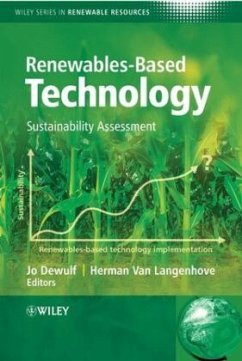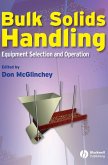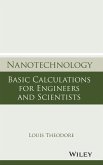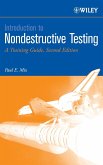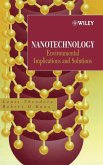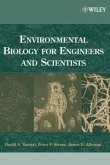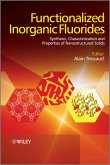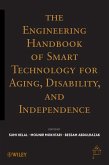Jo DewulfSustainability Assessment
Renewables-Based Technology
Sustainability Assessment
Herausgeber: Dewulf, Jo; Langenhove, Herman Van
Jo DewulfSustainability Assessment
Renewables-Based Technology
Sustainability Assessment
Herausgeber: Dewulf, Jo; Langenhove, Herman Van
- Gebundenes Buch
- Merkliste
- Auf die Merkliste
- Bewerten Bewerten
- Teilen
- Produkt teilen
- Produkterinnerung
- Produkterinnerung
The concepts 'renewable recources' and 'sustainability' are receiving much attention by academia, governments and industry. With the current rate of consumption we have fossil oil reserves left for 40 years. Renewable resources are of key importance for the development of a sustainable society and it is vital that governmental and business decision-makers are equiped with adequate assessment tools.
Renewables-Based Technology: Sustainability Assessment brings together and evaluates the main sustainability assessment methods and techniques in one volume.
Structured into three main…mehr
Andere Kunden interessierten sich auch für
![Bulk Solids Handling Bulk Solids Handling]() Don McGlincheyBulk Solids Handling182,99 €
Don McGlincheyBulk Solids Handling182,99 €![Nanotechnology Nanotechnology]() Louis TheodoreNanotechnology146,99 €
Louis TheodoreNanotechnology146,99 €![Introduction to Nondestructive Testing Introduction to Nondestructive Testing]() Paul E. MixIntroduction to Nondestructive Testing163,99 €
Paul E. MixIntroduction to Nondestructive Testing163,99 €![Nanotechnology Nanotechnology]() Louis TheodoreNanotechnology171,99 €
Louis TheodoreNanotechnology171,99 €![Environmental Biology for Engineers and Scientists Environmental Biology for Engineers and Scientists]() David A. VaccariEnvironmental Biology for Engineers and Scientists166,99 €
David A. VaccariEnvironmental Biology for Engineers and Scientists166,99 €![Functionalized Inorganic Fluorides Functionalized Inorganic Fluorides]() Functionalized Inorganic Fluorides186,99 €
Functionalized Inorganic Fluorides186,99 €![The Engineering Handbook of Smart Technology for Aging, Disability, and Independence The Engineering Handbook of Smart Technology for Aging, Disability, and Independence]() Abdelsalam HelalThe Engineering Handbook of Smart Technology for Aging, Disability, and Independence367,99 €
Abdelsalam HelalThe Engineering Handbook of Smart Technology for Aging, Disability, and Independence367,99 €-
-
-
The concepts 'renewable recources' and 'sustainability' are receiving much attention by academia, governments and industry. With the current rate of consumption we have fossil oil reserves left for 40 years. Renewable resources are of key importance for the development of a sustainable society and it is vital that governmental and business decision-makers are equiped with adequate assessment tools.
Renewables-Based Technology: Sustainability Assessment brings together and evaluates the main sustainability assessment methods and techniques in one volume.
Structured into three main section, Part One introduces the quantitative assessment of renewables, their potential as feedstock for industry, and an overview of sustainability performance indicators. Part Two introduces the key sustainability methods and techniques that are currently used. Part Three contextualises these methods by providing case studies that are set within the major industries benefiting from renewables.
_ Links the two issues of sustainability assessment and renewable resources.
_ Includes case studies from the major industries that can benefit from using renewable resources, such as agriculture, biotechnology, food packaging, energy-biofuel, bio-polymer, bio-pharmaceutical and organic waste treatment.
_ Written by a global team of authors from academia, governmental departments, research centres and international companies.
This book will be a main source of information for professionals from a range of agricultural, chemistry, chemical and process industries. Also researchers within departments of agriculture, chemistry, chemical engineering, food technology, environmental technology, who are looking at sustainability or clean technology issues.It will also be a valuable reference for upper-level undergraduate and Master students.
Renewables-Based Technology: Sustainability Assessment brings together and evaluates the main sustainability assessment methods and techniques in one volume.
Structured into three main section, Part One introduces the quantitative assessment of renewables, their potential as feedstock for industry, and an overview of sustainability performance indicators. Part Two introduces the key sustainability methods and techniques that are currently used. Part Three contextualises these methods by providing case studies that are set within the major industries benefiting from renewables.
_ Links the two issues of sustainability assessment and renewable resources.
_ Includes case studies from the major industries that can benefit from using renewable resources, such as agriculture, biotechnology, food packaging, energy-biofuel, bio-polymer, bio-pharmaceutical and organic waste treatment.
_ Written by a global team of authors from academia, governmental departments, research centres and international companies.
This book will be a main source of information for professionals from a range of agricultural, chemistry, chemical and process industries. Also researchers within departments of agriculture, chemistry, chemical engineering, food technology, environmental technology, who are looking at sustainability or clean technology issues.It will also be a valuable reference for upper-level undergraduate and Master students.
Produktdetails
- Produktdetails
- Wiley Renewable Resources
- Verlag: Wiley & Sons
- 1. Auflage
- Seitenzahl: 384
- Erscheinungstermin: 24. März 2006
- Englisch
- Abmessung: 252mm x 174mm x 29mm
- Gewicht: 880g
- ISBN-13: 9780470022412
- ISBN-10: 0470022418
- Artikelnr.: 20833962
- Herstellerkennzeichnung
- Libri GmbH
- Europaallee 1
- 36244 Bad Hersfeld
- gpsr@libri.de
- Wiley Renewable Resources
- Verlag: Wiley & Sons
- 1. Auflage
- Seitenzahl: 384
- Erscheinungstermin: 24. März 2006
- Englisch
- Abmessung: 252mm x 174mm x 29mm
- Gewicht: 880g
- ISBN-13: 9780470022412
- ISBN-10: 0470022418
- Artikelnr.: 20833962
- Herstellerkennzeichnung
- Libri GmbH
- Europaallee 1
- 36244 Bad Hersfeld
- gpsr@libri.de
Editors: Prof Dr Jo Dewulf, Prof Dr Herman van Langenhove, both of Ghent University, Belgium. Both experienced researchers in environmental chemistry and clean technology.
Contributors xv
Foreword xvii
Series Preface xix
Preface xxi
List of Abbreviations xxiii
Part I Renewables as a Resource and Sustainability Performance Indicators 1
1 The Contribution of Renewables to Society 3
Göran Berndes
1.1 Introduction 3
1.2 Historic and Present Biomass Uses for Food, Energy and Materials in the
World 6
1.3 Potential Availability of Agricultural Residues and Land for Non-Food
Crop Production 8
1.4 Drivers Behind Increasing Demand for Biomass for Energy and Materials
10
1.5 Land Use Competition 12
1.6 Multifunctional Biomass Production Systems 14
1.7 Summary 16
2 The Potential of Renewables as a Feedstock for Chemistry and Energy 19
Wilfried G. J. H. M. van Sark, Martin K. Patel, André P. C. Faaij and
Monique M. Hoogwijk
2.1 Introduction 19
2.2 Supply of Energy and Materials Using Renewables 21
2.3 Demand for Energy and Materials 31
2.4 Summary 34
3 Sustainability Performance Indicators 39
Alexei Lapkin
3.1 Introduction 39
3.2 The Hierarchy of Sustainability Metrics 40
3.3 Aspects of Methodology 42
3.4 Examples of Sustainability Metrics for Technology Assessment 46
3.5 Summary 51
Part II Relevant Assessment Tools 55
4 Life Cycle Inventory Analysis Applied to Renewable Resources 57
Niels Jungbluth and Rolf Frischknecht
4.1 Introduction 57
4.2 Conceptual Background to LCA in ISO 14040ff 58
4.3 Goal and Scope Definition 59
4.4 Inventory Analysis 59
4.5 LCI Data Documentation and Exchange Format 68
4.6 Consequential versus Attributional LCI 69
4.7 Summary 70
5 Net Energy Balancing and Fuel-Cycle Analysis 73
Hosein Shapouri, Michael Wang and James A. Duffield
5.1 Introduction 73
5.2 Methodology 75
5.3 Energy Balance of Fossil Fuel versus Biofuel 79
5.4 Greenhouse Gas Emissions from Corn Ethanol Production 83
5.5 Summary 84
6 Life Cycle Assessment as an Environmental Sustainability Tool 87
Adisa Azapagic
6.1 Introduction 87
6.2 The LCA Methodology: A Brief Overview 88
6.3 LCIA Impact Categories as Indicators of Environmental Sustainability 93
6.4 Using LCA to Assess Environmental Sustainability 105
6.5 Summary 108
7 Exergy 111
Jo Dewulf and Herman Van Langenhove
7.1 Introduction 111
7.2 Assessment of Sustainability of Technology: Developing Metrics 113
7.3 A Thermodynamic Basis for Developing Sustainability Assessment Metrics:
Exergy 114
7.4 Technology Assessment by Exergy Analysis 116
7.5 Exergy-Based Indicators: How to Assess the Role of Renewables 117
7.6 Exergy-based Indicators: Integrating the Role of Renewables in an
Overall Physical Chemical Sustainability Assessment 122
7.7 Summary 123
8 Material Flow Analysis and the Use of Renewables from a Systems
Perspective 127
Stefan Bringezu
8.1 Introduction 127
8.2 Overview of the Methodology 128
8.3 Examples of MFA Studies in the Context of Renewables 130
8.4 Summary 139
9 Ecological Footprints and Biocapacity: Essential Elements in
Sustainability Assessment 143
William E. Rees
9.1 Introduction 143
9.2 Eco-Footprint Analysis 144
9.3 Inherent Strengths in EFA 150
9.5 Summary 155
10 The Sustainable Process Index (SPI) 159
Michael Narodoslawsky and Anneliese Niederl
10.1 Introduction 159
10.2 Computation of the SPI 162
10.3 Case Study: Biodiesel from Used Vegetable Oil 168
10.4 Summary 170
Part III Case Studies 173
11 Assessment of Sustainable Land Use in Producing Biomass 175
Helmut Haberl and Karl-Heinz Erb
11.1 Introduction 175
11.2 Sustainability Issues Involved in Promoting Biomass Energy 177
11.3 Recommendations 186
11.4 Summary 187
12 Assessment of the Forest Products Industries 193
Klaus Richter, Frank Werner and Hans-Jörg Althaus
12.1 Introduction 193
12.2 Metrics and Criteria to Assess the Sustainability of Forestry 195
12.3 Metrics and Criteria for Assessing the Sustainability of the Wood
Industry 198
12.4 Scope for Action 205
12.5 Summary 205
13 Assessment of the Energy Production Industry: Modern Options for
Producing Secondary Energy
Carriers from Biomass 209
André Faaij
13.1 Introduction 209
13.2 Technology Overview 210
13.3 Economics of Biomass Energy Systems 224
13.4 Heat, Power and Fuels from Biomass: Key Markets 225
13.5 Summary 227
14 Assessment of Biofuels 231
James A. Duffield, Hosein Shapouri and Michael Wang
14.1 Introduction 231
14.2 Background 231
14.3 Biofuel Feedstocks 232
14.4 Bio-Transportation Fuels and Fuel Additives 234
14.5 Current Supply of Biofuels 235
14.6 Future Supply of Biofuels 236
14.7 Measuring the Sustainability of Biofuels 238
14.8 Summary 243
15 Assessment of Organic Waste Treatment 247
Jan-Olov Sundqvist
15.1 Introduction 247
15.2 General Description of Options for Organic Waste Treatment 247
15.3 Environmental Characteristics of Organic Waste Treatment 249
15.4 Results of a Life Cycle Assessment of Organic Waste 250
15.5 Discussion 262
15.6 Summary 262
16 Oleochemical and Petrochemical Surfactants: An Overall Assessment 265
Erwan Saouter, Gert Van Hoof, Mark Stalmans and Alan Brunskill
16.1 Introduction 265
16.2 Main Chemical and Structural Differences 267
16.3 Resource and Usage 268
16.4 Environmental Profile 270
16.5 Sustainability Aspects of Oleochemical Production 276
16.6 Summary 278
17 Assessment of Bio-Based Packaging Materials 281
Andreas Detzel, Martina Krüger and Axel Ostermayer
17.1 Introduction 281
17.2 Environmental Aspects of Polymer Production 283
17.3 Environmental Aspects of Packaging Disposal 287
17.4 Summary 295
18 Assessment of Biotechnology-Based Chemicals 299
Peter Saling and Andreas Kicherer
18.1 Introduction 299
18.2 Explanation: What is Eco-Efficiency Analysis? 300
18.3 Evaluation of Decision-making Processes with Eco-Efficiency Analysis
307
18.4 Case Studies 308
18.5 Summary 311
19 Assessment of Bio-Based Pharmaceuticals: The Cephalexin Case 315
Alle Bruggink and Peter Nossin
19.1 Introduction 315
19.2 Assessment Methods During Process Development and Technology Transfers
316
19.3 Assessment of Bio-Based Routes to Cephalexin 322
19.4 Summary 328
Part IV Conclusions 331
20 Conclusions 333
Jo Dewulf and Herman Van Langenhove
20.1 Introduction 333
20.2 The Available Sustainability Metrics 334
20.3 Where Are We Going in Assessing Renewables-Based Technology? 336
Reference 337
Index 339
Foreword xvii
Series Preface xix
Preface xxi
List of Abbreviations xxiii
Part I Renewables as a Resource and Sustainability Performance Indicators 1
1 The Contribution of Renewables to Society 3
Göran Berndes
1.1 Introduction 3
1.2 Historic and Present Biomass Uses for Food, Energy and Materials in the
World 6
1.3 Potential Availability of Agricultural Residues and Land for Non-Food
Crop Production 8
1.4 Drivers Behind Increasing Demand for Biomass for Energy and Materials
10
1.5 Land Use Competition 12
1.6 Multifunctional Biomass Production Systems 14
1.7 Summary 16
2 The Potential of Renewables as a Feedstock for Chemistry and Energy 19
Wilfried G. J. H. M. van Sark, Martin K. Patel, André P. C. Faaij and
Monique M. Hoogwijk
2.1 Introduction 19
2.2 Supply of Energy and Materials Using Renewables 21
2.3 Demand for Energy and Materials 31
2.4 Summary 34
3 Sustainability Performance Indicators 39
Alexei Lapkin
3.1 Introduction 39
3.2 The Hierarchy of Sustainability Metrics 40
3.3 Aspects of Methodology 42
3.4 Examples of Sustainability Metrics for Technology Assessment 46
3.5 Summary 51
Part II Relevant Assessment Tools 55
4 Life Cycle Inventory Analysis Applied to Renewable Resources 57
Niels Jungbluth and Rolf Frischknecht
4.1 Introduction 57
4.2 Conceptual Background to LCA in ISO 14040ff 58
4.3 Goal and Scope Definition 59
4.4 Inventory Analysis 59
4.5 LCI Data Documentation and Exchange Format 68
4.6 Consequential versus Attributional LCI 69
4.7 Summary 70
5 Net Energy Balancing and Fuel-Cycle Analysis 73
Hosein Shapouri, Michael Wang and James A. Duffield
5.1 Introduction 73
5.2 Methodology 75
5.3 Energy Balance of Fossil Fuel versus Biofuel 79
5.4 Greenhouse Gas Emissions from Corn Ethanol Production 83
5.5 Summary 84
6 Life Cycle Assessment as an Environmental Sustainability Tool 87
Adisa Azapagic
6.1 Introduction 87
6.2 The LCA Methodology: A Brief Overview 88
6.3 LCIA Impact Categories as Indicators of Environmental Sustainability 93
6.4 Using LCA to Assess Environmental Sustainability 105
6.5 Summary 108
7 Exergy 111
Jo Dewulf and Herman Van Langenhove
7.1 Introduction 111
7.2 Assessment of Sustainability of Technology: Developing Metrics 113
7.3 A Thermodynamic Basis for Developing Sustainability Assessment Metrics:
Exergy 114
7.4 Technology Assessment by Exergy Analysis 116
7.5 Exergy-Based Indicators: How to Assess the Role of Renewables 117
7.6 Exergy-based Indicators: Integrating the Role of Renewables in an
Overall Physical Chemical Sustainability Assessment 122
7.7 Summary 123
8 Material Flow Analysis and the Use of Renewables from a Systems
Perspective 127
Stefan Bringezu
8.1 Introduction 127
8.2 Overview of the Methodology 128
8.3 Examples of MFA Studies in the Context of Renewables 130
8.4 Summary 139
9 Ecological Footprints and Biocapacity: Essential Elements in
Sustainability Assessment 143
William E. Rees
9.1 Introduction 143
9.2 Eco-Footprint Analysis 144
9.3 Inherent Strengths in EFA 150
9.5 Summary 155
10 The Sustainable Process Index (SPI) 159
Michael Narodoslawsky and Anneliese Niederl
10.1 Introduction 159
10.2 Computation of the SPI 162
10.3 Case Study: Biodiesel from Used Vegetable Oil 168
10.4 Summary 170
Part III Case Studies 173
11 Assessment of Sustainable Land Use in Producing Biomass 175
Helmut Haberl and Karl-Heinz Erb
11.1 Introduction 175
11.2 Sustainability Issues Involved in Promoting Biomass Energy 177
11.3 Recommendations 186
11.4 Summary 187
12 Assessment of the Forest Products Industries 193
Klaus Richter, Frank Werner and Hans-Jörg Althaus
12.1 Introduction 193
12.2 Metrics and Criteria to Assess the Sustainability of Forestry 195
12.3 Metrics and Criteria for Assessing the Sustainability of the Wood
Industry 198
12.4 Scope for Action 205
12.5 Summary 205
13 Assessment of the Energy Production Industry: Modern Options for
Producing Secondary Energy
Carriers from Biomass 209
André Faaij
13.1 Introduction 209
13.2 Technology Overview 210
13.3 Economics of Biomass Energy Systems 224
13.4 Heat, Power and Fuels from Biomass: Key Markets 225
13.5 Summary 227
14 Assessment of Biofuels 231
James A. Duffield, Hosein Shapouri and Michael Wang
14.1 Introduction 231
14.2 Background 231
14.3 Biofuel Feedstocks 232
14.4 Bio-Transportation Fuels and Fuel Additives 234
14.5 Current Supply of Biofuels 235
14.6 Future Supply of Biofuels 236
14.7 Measuring the Sustainability of Biofuels 238
14.8 Summary 243
15 Assessment of Organic Waste Treatment 247
Jan-Olov Sundqvist
15.1 Introduction 247
15.2 General Description of Options for Organic Waste Treatment 247
15.3 Environmental Characteristics of Organic Waste Treatment 249
15.4 Results of a Life Cycle Assessment of Organic Waste 250
15.5 Discussion 262
15.6 Summary 262
16 Oleochemical and Petrochemical Surfactants: An Overall Assessment 265
Erwan Saouter, Gert Van Hoof, Mark Stalmans and Alan Brunskill
16.1 Introduction 265
16.2 Main Chemical and Structural Differences 267
16.3 Resource and Usage 268
16.4 Environmental Profile 270
16.5 Sustainability Aspects of Oleochemical Production 276
16.6 Summary 278
17 Assessment of Bio-Based Packaging Materials 281
Andreas Detzel, Martina Krüger and Axel Ostermayer
17.1 Introduction 281
17.2 Environmental Aspects of Polymer Production 283
17.3 Environmental Aspects of Packaging Disposal 287
17.4 Summary 295
18 Assessment of Biotechnology-Based Chemicals 299
Peter Saling and Andreas Kicherer
18.1 Introduction 299
18.2 Explanation: What is Eco-Efficiency Analysis? 300
18.3 Evaluation of Decision-making Processes with Eco-Efficiency Analysis
307
18.4 Case Studies 308
18.5 Summary 311
19 Assessment of Bio-Based Pharmaceuticals: The Cephalexin Case 315
Alle Bruggink and Peter Nossin
19.1 Introduction 315
19.2 Assessment Methods During Process Development and Technology Transfers
316
19.3 Assessment of Bio-Based Routes to Cephalexin 322
19.4 Summary 328
Part IV Conclusions 331
20 Conclusions 333
Jo Dewulf and Herman Van Langenhove
20.1 Introduction 333
20.2 The Available Sustainability Metrics 334
20.3 Where Are We Going in Assessing Renewables-Based Technology? 336
Reference 337
Index 339
Contributors xv
Foreword xvii
Series Preface xix
Preface xxi
List of Abbreviations xxiii
Part I Renewables as a Resource and Sustainability Performance Indicators 1
1 The Contribution of Renewables to Society 3
Göran Berndes
1.1 Introduction 3
1.2 Historic and Present Biomass Uses for Food, Energy and Materials in the
World 6
1.3 Potential Availability of Agricultural Residues and Land for Non-Food
Crop Production 8
1.4 Drivers Behind Increasing Demand for Biomass for Energy and Materials
10
1.5 Land Use Competition 12
1.6 Multifunctional Biomass Production Systems 14
1.7 Summary 16
2 The Potential of Renewables as a Feedstock for Chemistry and Energy 19
Wilfried G. J. H. M. van Sark, Martin K. Patel, André P. C. Faaij and
Monique M. Hoogwijk
2.1 Introduction 19
2.2 Supply of Energy and Materials Using Renewables 21
2.3 Demand for Energy and Materials 31
2.4 Summary 34
3 Sustainability Performance Indicators 39
Alexei Lapkin
3.1 Introduction 39
3.2 The Hierarchy of Sustainability Metrics 40
3.3 Aspects of Methodology 42
3.4 Examples of Sustainability Metrics for Technology Assessment 46
3.5 Summary 51
Part II Relevant Assessment Tools 55
4 Life Cycle Inventory Analysis Applied to Renewable Resources 57
Niels Jungbluth and Rolf Frischknecht
4.1 Introduction 57
4.2 Conceptual Background to LCA in ISO 14040ff 58
4.3 Goal and Scope Definition 59
4.4 Inventory Analysis 59
4.5 LCI Data Documentation and Exchange Format 68
4.6 Consequential versus Attributional LCI 69
4.7 Summary 70
5 Net Energy Balancing and Fuel-Cycle Analysis 73
Hosein Shapouri, Michael Wang and James A. Duffield
5.1 Introduction 73
5.2 Methodology 75
5.3 Energy Balance of Fossil Fuel versus Biofuel 79
5.4 Greenhouse Gas Emissions from Corn Ethanol Production 83
5.5 Summary 84
6 Life Cycle Assessment as an Environmental Sustainability Tool 87
Adisa Azapagic
6.1 Introduction 87
6.2 The LCA Methodology: A Brief Overview 88
6.3 LCIA Impact Categories as Indicators of Environmental Sustainability 93
6.4 Using LCA to Assess Environmental Sustainability 105
6.5 Summary 108
7 Exergy 111
Jo Dewulf and Herman Van Langenhove
7.1 Introduction 111
7.2 Assessment of Sustainability of Technology: Developing Metrics 113
7.3 A Thermodynamic Basis for Developing Sustainability Assessment Metrics:
Exergy 114
7.4 Technology Assessment by Exergy Analysis 116
7.5 Exergy-Based Indicators: How to Assess the Role of Renewables 117
7.6 Exergy-based Indicators: Integrating the Role of Renewables in an
Overall Physical Chemical Sustainability Assessment 122
7.7 Summary 123
8 Material Flow Analysis and the Use of Renewables from a Systems
Perspective 127
Stefan Bringezu
8.1 Introduction 127
8.2 Overview of the Methodology 128
8.3 Examples of MFA Studies in the Context of Renewables 130
8.4 Summary 139
9 Ecological Footprints and Biocapacity: Essential Elements in
Sustainability Assessment 143
William E. Rees
9.1 Introduction 143
9.2 Eco-Footprint Analysis 144
9.3 Inherent Strengths in EFA 150
9.5 Summary 155
10 The Sustainable Process Index (SPI) 159
Michael Narodoslawsky and Anneliese Niederl
10.1 Introduction 159
10.2 Computation of the SPI 162
10.3 Case Study: Biodiesel from Used Vegetable Oil 168
10.4 Summary 170
Part III Case Studies 173
11 Assessment of Sustainable Land Use in Producing Biomass 175
Helmut Haberl and Karl-Heinz Erb
11.1 Introduction 175
11.2 Sustainability Issues Involved in Promoting Biomass Energy 177
11.3 Recommendations 186
11.4 Summary 187
12 Assessment of the Forest Products Industries 193
Klaus Richter, Frank Werner and Hans-Jörg Althaus
12.1 Introduction 193
12.2 Metrics and Criteria to Assess the Sustainability of Forestry 195
12.3 Metrics and Criteria for Assessing the Sustainability of the Wood
Industry 198
12.4 Scope for Action 205
12.5 Summary 205
13 Assessment of the Energy Production Industry: Modern Options for
Producing Secondary Energy
Carriers from Biomass 209
André Faaij
13.1 Introduction 209
13.2 Technology Overview 210
13.3 Economics of Biomass Energy Systems 224
13.4 Heat, Power and Fuels from Biomass: Key Markets 225
13.5 Summary 227
14 Assessment of Biofuels 231
James A. Duffield, Hosein Shapouri and Michael Wang
14.1 Introduction 231
14.2 Background 231
14.3 Biofuel Feedstocks 232
14.4 Bio-Transportation Fuels and Fuel Additives 234
14.5 Current Supply of Biofuels 235
14.6 Future Supply of Biofuels 236
14.7 Measuring the Sustainability of Biofuels 238
14.8 Summary 243
15 Assessment of Organic Waste Treatment 247
Jan-Olov Sundqvist
15.1 Introduction 247
15.2 General Description of Options for Organic Waste Treatment 247
15.3 Environmental Characteristics of Organic Waste Treatment 249
15.4 Results of a Life Cycle Assessment of Organic Waste 250
15.5 Discussion 262
15.6 Summary 262
16 Oleochemical and Petrochemical Surfactants: An Overall Assessment 265
Erwan Saouter, Gert Van Hoof, Mark Stalmans and Alan Brunskill
16.1 Introduction 265
16.2 Main Chemical and Structural Differences 267
16.3 Resource and Usage 268
16.4 Environmental Profile 270
16.5 Sustainability Aspects of Oleochemical Production 276
16.6 Summary 278
17 Assessment of Bio-Based Packaging Materials 281
Andreas Detzel, Martina Krüger and Axel Ostermayer
17.1 Introduction 281
17.2 Environmental Aspects of Polymer Production 283
17.3 Environmental Aspects of Packaging Disposal 287
17.4 Summary 295
18 Assessment of Biotechnology-Based Chemicals 299
Peter Saling and Andreas Kicherer
18.1 Introduction 299
18.2 Explanation: What is Eco-Efficiency Analysis? 300
18.3 Evaluation of Decision-making Processes with Eco-Efficiency Analysis
307
18.4 Case Studies 308
18.5 Summary 311
19 Assessment of Bio-Based Pharmaceuticals: The Cephalexin Case 315
Alle Bruggink and Peter Nossin
19.1 Introduction 315
19.2 Assessment Methods During Process Development and Technology Transfers
316
19.3 Assessment of Bio-Based Routes to Cephalexin 322
19.4 Summary 328
Part IV Conclusions 331
20 Conclusions 333
Jo Dewulf and Herman Van Langenhove
20.1 Introduction 333
20.2 The Available Sustainability Metrics 334
20.3 Where Are We Going in Assessing Renewables-Based Technology? 336
Reference 337
Index 339
Foreword xvii
Series Preface xix
Preface xxi
List of Abbreviations xxiii
Part I Renewables as a Resource and Sustainability Performance Indicators 1
1 The Contribution of Renewables to Society 3
Göran Berndes
1.1 Introduction 3
1.2 Historic and Present Biomass Uses for Food, Energy and Materials in the
World 6
1.3 Potential Availability of Agricultural Residues and Land for Non-Food
Crop Production 8
1.4 Drivers Behind Increasing Demand for Biomass for Energy and Materials
10
1.5 Land Use Competition 12
1.6 Multifunctional Biomass Production Systems 14
1.7 Summary 16
2 The Potential of Renewables as a Feedstock for Chemistry and Energy 19
Wilfried G. J. H. M. van Sark, Martin K. Patel, André P. C. Faaij and
Monique M. Hoogwijk
2.1 Introduction 19
2.2 Supply of Energy and Materials Using Renewables 21
2.3 Demand for Energy and Materials 31
2.4 Summary 34
3 Sustainability Performance Indicators 39
Alexei Lapkin
3.1 Introduction 39
3.2 The Hierarchy of Sustainability Metrics 40
3.3 Aspects of Methodology 42
3.4 Examples of Sustainability Metrics for Technology Assessment 46
3.5 Summary 51
Part II Relevant Assessment Tools 55
4 Life Cycle Inventory Analysis Applied to Renewable Resources 57
Niels Jungbluth and Rolf Frischknecht
4.1 Introduction 57
4.2 Conceptual Background to LCA in ISO 14040ff 58
4.3 Goal and Scope Definition 59
4.4 Inventory Analysis 59
4.5 LCI Data Documentation and Exchange Format 68
4.6 Consequential versus Attributional LCI 69
4.7 Summary 70
5 Net Energy Balancing and Fuel-Cycle Analysis 73
Hosein Shapouri, Michael Wang and James A. Duffield
5.1 Introduction 73
5.2 Methodology 75
5.3 Energy Balance of Fossil Fuel versus Biofuel 79
5.4 Greenhouse Gas Emissions from Corn Ethanol Production 83
5.5 Summary 84
6 Life Cycle Assessment as an Environmental Sustainability Tool 87
Adisa Azapagic
6.1 Introduction 87
6.2 The LCA Methodology: A Brief Overview 88
6.3 LCIA Impact Categories as Indicators of Environmental Sustainability 93
6.4 Using LCA to Assess Environmental Sustainability 105
6.5 Summary 108
7 Exergy 111
Jo Dewulf and Herman Van Langenhove
7.1 Introduction 111
7.2 Assessment of Sustainability of Technology: Developing Metrics 113
7.3 A Thermodynamic Basis for Developing Sustainability Assessment Metrics:
Exergy 114
7.4 Technology Assessment by Exergy Analysis 116
7.5 Exergy-Based Indicators: How to Assess the Role of Renewables 117
7.6 Exergy-based Indicators: Integrating the Role of Renewables in an
Overall Physical Chemical Sustainability Assessment 122
7.7 Summary 123
8 Material Flow Analysis and the Use of Renewables from a Systems
Perspective 127
Stefan Bringezu
8.1 Introduction 127
8.2 Overview of the Methodology 128
8.3 Examples of MFA Studies in the Context of Renewables 130
8.4 Summary 139
9 Ecological Footprints and Biocapacity: Essential Elements in
Sustainability Assessment 143
William E. Rees
9.1 Introduction 143
9.2 Eco-Footprint Analysis 144
9.3 Inherent Strengths in EFA 150
9.5 Summary 155
10 The Sustainable Process Index (SPI) 159
Michael Narodoslawsky and Anneliese Niederl
10.1 Introduction 159
10.2 Computation of the SPI 162
10.3 Case Study: Biodiesel from Used Vegetable Oil 168
10.4 Summary 170
Part III Case Studies 173
11 Assessment of Sustainable Land Use in Producing Biomass 175
Helmut Haberl and Karl-Heinz Erb
11.1 Introduction 175
11.2 Sustainability Issues Involved in Promoting Biomass Energy 177
11.3 Recommendations 186
11.4 Summary 187
12 Assessment of the Forest Products Industries 193
Klaus Richter, Frank Werner and Hans-Jörg Althaus
12.1 Introduction 193
12.2 Metrics and Criteria to Assess the Sustainability of Forestry 195
12.3 Metrics and Criteria for Assessing the Sustainability of the Wood
Industry 198
12.4 Scope for Action 205
12.5 Summary 205
13 Assessment of the Energy Production Industry: Modern Options for
Producing Secondary Energy
Carriers from Biomass 209
André Faaij
13.1 Introduction 209
13.2 Technology Overview 210
13.3 Economics of Biomass Energy Systems 224
13.4 Heat, Power and Fuels from Biomass: Key Markets 225
13.5 Summary 227
14 Assessment of Biofuels 231
James A. Duffield, Hosein Shapouri and Michael Wang
14.1 Introduction 231
14.2 Background 231
14.3 Biofuel Feedstocks 232
14.4 Bio-Transportation Fuels and Fuel Additives 234
14.5 Current Supply of Biofuels 235
14.6 Future Supply of Biofuels 236
14.7 Measuring the Sustainability of Biofuels 238
14.8 Summary 243
15 Assessment of Organic Waste Treatment 247
Jan-Olov Sundqvist
15.1 Introduction 247
15.2 General Description of Options for Organic Waste Treatment 247
15.3 Environmental Characteristics of Organic Waste Treatment 249
15.4 Results of a Life Cycle Assessment of Organic Waste 250
15.5 Discussion 262
15.6 Summary 262
16 Oleochemical and Petrochemical Surfactants: An Overall Assessment 265
Erwan Saouter, Gert Van Hoof, Mark Stalmans and Alan Brunskill
16.1 Introduction 265
16.2 Main Chemical and Structural Differences 267
16.3 Resource and Usage 268
16.4 Environmental Profile 270
16.5 Sustainability Aspects of Oleochemical Production 276
16.6 Summary 278
17 Assessment of Bio-Based Packaging Materials 281
Andreas Detzel, Martina Krüger and Axel Ostermayer
17.1 Introduction 281
17.2 Environmental Aspects of Polymer Production 283
17.3 Environmental Aspects of Packaging Disposal 287
17.4 Summary 295
18 Assessment of Biotechnology-Based Chemicals 299
Peter Saling and Andreas Kicherer
18.1 Introduction 299
18.2 Explanation: What is Eco-Efficiency Analysis? 300
18.3 Evaluation of Decision-making Processes with Eco-Efficiency Analysis
307
18.4 Case Studies 308
18.5 Summary 311
19 Assessment of Bio-Based Pharmaceuticals: The Cephalexin Case 315
Alle Bruggink and Peter Nossin
19.1 Introduction 315
19.2 Assessment Methods During Process Development and Technology Transfers
316
19.3 Assessment of Bio-Based Routes to Cephalexin 322
19.4 Summary 328
Part IV Conclusions 331
20 Conclusions 333
Jo Dewulf and Herman Van Langenhove
20.1 Introduction 333
20.2 The Available Sustainability Metrics 334
20.3 Where Are We Going in Assessing Renewables-Based Technology? 336
Reference 337
Index 339

